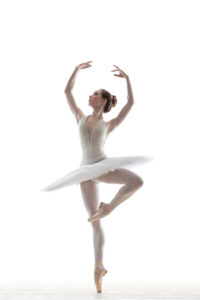
“Stability and mobility endlessly alternate,” Laban writes in Choreutics. This basic pattern underlies all movement through space. For instance, in a turning leap, spinning while flying through the air leads to a temporary loss of equilibrium. But when the feet touch the floor, there is a return to quietude and relative balance.
According to Laban, “movements containing dimensional tensions give a feeling of stability.” These fundamental lines of motion – up and down, across and open, backwards and forwards – are Laban’s stable prototypes. They provide the most basic cognitive map of space, along with the conceptual framework underlying the ballet barre.
As a vehemently “modern” dancer, Laban wanted to break out of the formal stability of ballet. And this is where the diagonal comes in. “Movements following space diagonals give a feeling of disequilibrium. The balance is dissolved in the flow, “ writes Laban.
For Laban, dimensions = stability and diagonals = mobility. These lines of motion provide contrasting poles for the natural oscillation between stability and mobility. It’s a great conceptual model. As Laban recognized, however, real living movement is something else again. Find out more in the next blogs.
